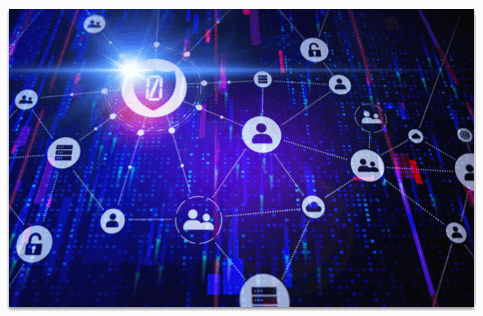Modern Zero Trust Defined
Zero trust is a security framework that takes a new approach to safeguarding information by enforcing strict identity verification and least-privilege access policies. Under this model, all users, devices, and applications are considered untrusted, even if inside an organization's network perimeter.
Zero Trust Governance Model

Why Zero Trust Adoption Is Growing
Perimeter-based security is ineffective. The zero trust model significantly reduces the risk of data breaches, even if the network perimeter is breached. Organizations are shifting from the old defense approach to monitoring all network traffic in real time, leveraging log analysis and multi-factor authentication to prevent unauthorized access.

The Benefits of Modern Zero Trust
Adopting a zero trust strategy empowers organizations to reduce complexity and build a centralized security framework that improves efficiency across resources and users, reduces cost, and is better aligned with compliance. Plus, it helps businesses with the adoption of multiple Cloud services like Microsoft Office 365, Dropbox, Salesforce, and more.
Measuring the Impact of Enabling Zero Trust
$60B
expected market value for zero trust security by 2027
The global zero trust security market was $23 billion in 2021 and is expected to reach up to $60 billion by 2027.
79%
of IT professionals choose zero trust adoption to protect data
Surveyed IT professionals say that data protection and prevention are key zero trust implementation drivers.
65%
of organizations want to to enable secure remote access with zero trust
Risk management (75%) and securing remote access (65%) are the top reasons to adopt a zero trust security strategy.
43%
data breach cost savings for organizations with mature zero trust architecture
The average cost of a data breach is $5.04M, but organizations with zero trust security could bring the cost down to $3.28M.
Your Zero Trust Roadmap
When implementing zero trust, there's no need to start from scratch. Instead, assess your organization's security framework and focus on integrating your solutions to improve their compatibility.
- Leverage AI and continuous monitoring: Malware executions and even sophisticated threats like supply chain attacks can be prevented with consistent monitoring.
- Focus on unified security: Think about security orchestration instead of isolated products. This leads to more reliable and comprehensive protection.
- Turn on access control: Access policies enhance security and user experience by allowing you to rank resources based on risk level and type of user.
- Leverage managed services: If you don’t have in-house resources to carry out implementation and management, partner with specialists to enable zero trust efficiently.
Choose Security That Always Verifies
Understand the security layers that are needed to remove implicit trust from your organization’s systems. Build a security ecosystem that leverages adaptive access control and consistent monitoring.